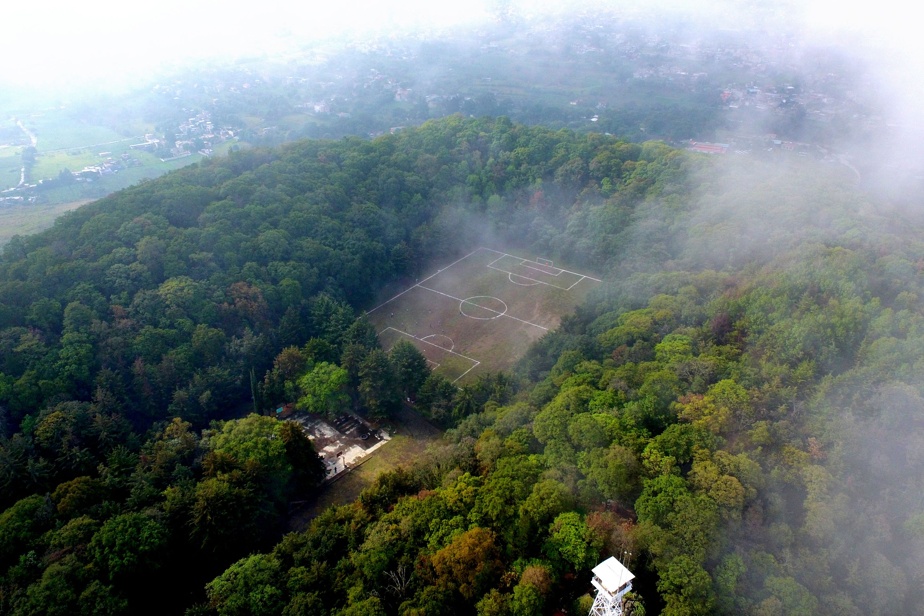(Mexico City) A former ceremonial site that has fallen into disuse, the center of the crater of an ancient volcano is today “a unique soccer field in the world”, surrounded by forests, in the suburbs of Mexico City.
The Teoca volcano rises about 2,700 meters above sea level in the district of Xochimilco, a green lung to the southeast of the megalopolis with 20 million inhabitants.
A dozen teams share the green meadow every weekend.
“It’s unique terrain in the world,” says Adrian Garcia, 32-year-old amateur footballer, graphic designer by profession, “there is a lot of vegetation, you can’t even see that it’s a crater.” “It’s very pleasant to come here to have fun, relax, with friends and family”, in this densely wooded area.
“This pitch must be around 70 years old,” says football league representative Joel Becerril. He remembers that his parents “used to bring me here when I was a child”.
At dawn, a thick fog covers the terrain before gradually dissipating as the sun warms the atmosphere.
To get there, a single road winds up to the summit as well as an 18-kilometer hiking trail on the wooded slopes of the volcano.
“It’s fantastic,” marvels amateur goalkeeper Daniel Mancilla Pena, 47. “It’s very impressive to get to the pitch and have such a pleasant setting to play football.”
According to the National Autonomous University of Mexico (UNAM), there are more than 200 volcanoes south of Mexico City, most of them inactive.
Mexico is located on the Pacific Ring of Fire, a highly seismic and volcanic area.
In May, the Popocatepetl volcano (“the smoking mountain” in Nahualt), from its height of 5426 m, experienced a resurgence of activity and threw up impressive incandescent flows, and thick gray or white fumaroles, as well as only ashes and gas.
